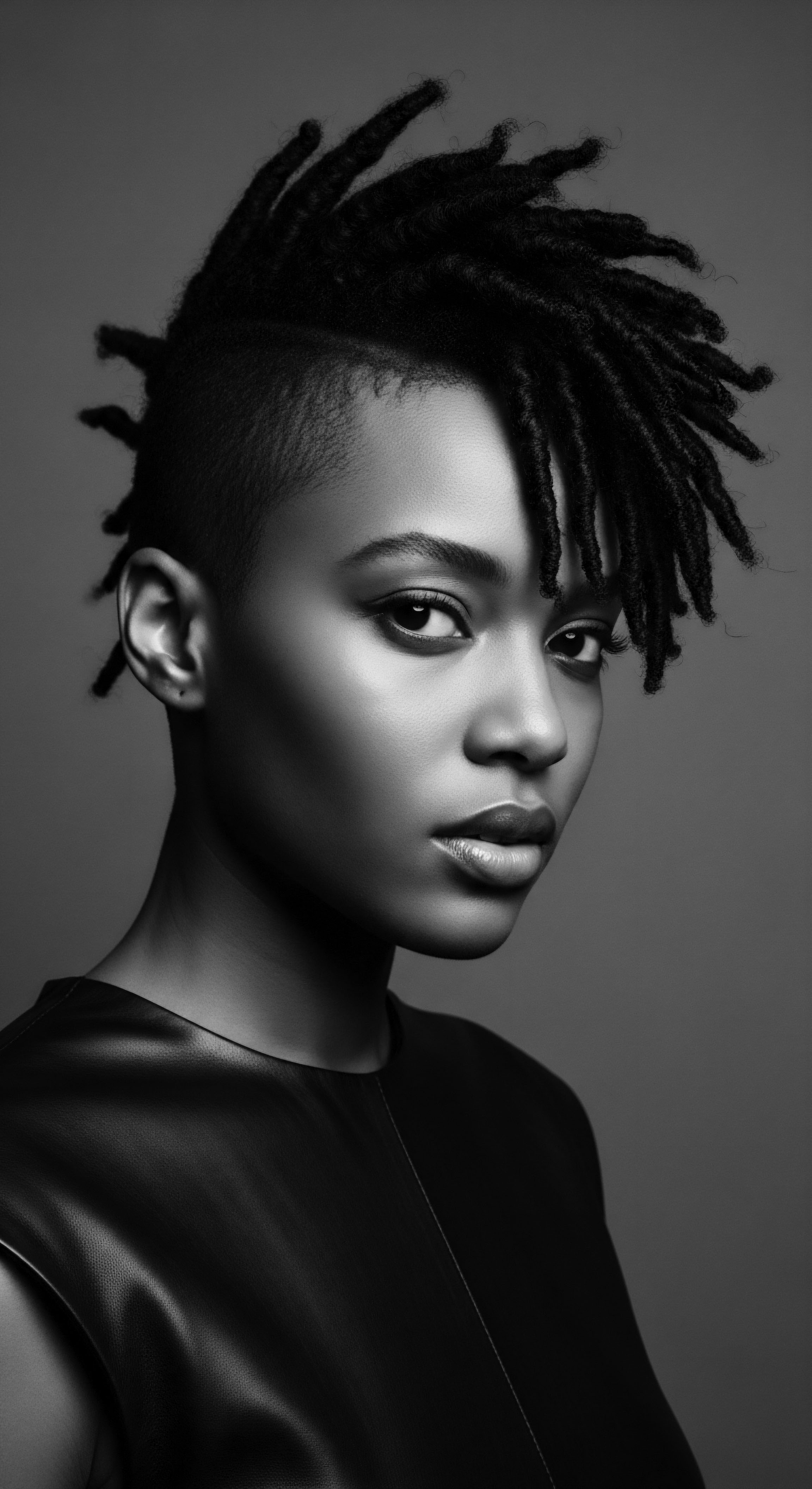
Fundamentals
Ancient Protective Styles represent a profound and enduring aspect of human ingenuity, particularly within the rich heritage of textured hair communities. At its most straightforward, the term points to traditional hair arrangements meticulously crafted to safeguard the hair strands and scalp from environmental elements, physical damage, and daily wear. This explanation extends beyond mere physical shielding; it encompasses a deep cultural and historical significance, offering a glimpse into ancestral wisdom and communal practices. The delineation of these styles is not solely about their physical form, but about their inherent purpose ❉ to promote hair health and longevity through mindful, low-manipulation methods.
For individuals newly discovering the expansive world of textured hair care, understanding Ancient Protective Styles begins with recognizing their dual function. They serve as a physical barrier against external stressors like sun, wind, and friction, which can lead to dryness and breakage. Simultaneously, these styles minimize direct handling of the hair, thereby reducing mechanical stress on delicate curls and coils.
This simple yet effective approach allows hair to retain moisture, encourages length retention, and maintains the integrity of the hair shaft. The very designation of these styles as ‘protective’ speaks to their foundational role in preserving the vitality of hair.

Ancestral Roots of Hair Preservation
The origins of these practices are deeply embedded in the daily lives and communal rhythms of ancient societies, particularly across the African continent. Before the advent of modern cosmetic science, ancestral communities relied on observation, generational knowledge, and the bounty of their natural surroundings to care for their hair. The specification of these methods evolved from a practical need to manage and preserve hair in diverse climates and lifestyles.
Ancient Protective Styles are a testament to ancestral wisdom, offering both physical preservation for textured hair and a rich legacy of cultural expression.
Consider the simplest forms of these styles ❉ braids, twists, and coils. These are not merely decorative choices; they are fundamental techniques for organizing hair in a way that limits exposure and tangling. The interpretation of ‘ancient’ here extends beyond a specific historical period, referring to practices that predate contemporary industrial hair care, often passed down through oral traditions and hands-on learning within families and communities. The description of these techniques, from the meticulous parting of sections to the careful interweaving of strands, highlights a dedication to hair wellness that has spanned millennia.
The historical context of these styles is crucial for a complete understanding. In many ancient African civilizations, hair was regarded as a sacred part of the body, a conduit for spiritual energy, and a powerful symbol of identity, status, and community affiliation. The very act of styling hair was often a communal ritual, fostering bonds and transmitting cultural knowledge. The elucidation of Ancient Protective Styles thus involves recognizing them as living traditions, continuously adapted and reinterpreted while holding onto their core ancestral meaning.

Intermediate
Moving beyond the foundational understanding, the intermediate meaning of Ancient Protective Styles reveals their sophisticated role within the tapestry of textured hair heritage. These styles are not simply static historical artifacts; they represent a dynamic system of care that addresses the unique biological characteristics of textured hair while simultaneously communicating profound cultural narratives. The clarification of their significance involves examining the interplay between hair biology, environmental adaptation, and social communication.
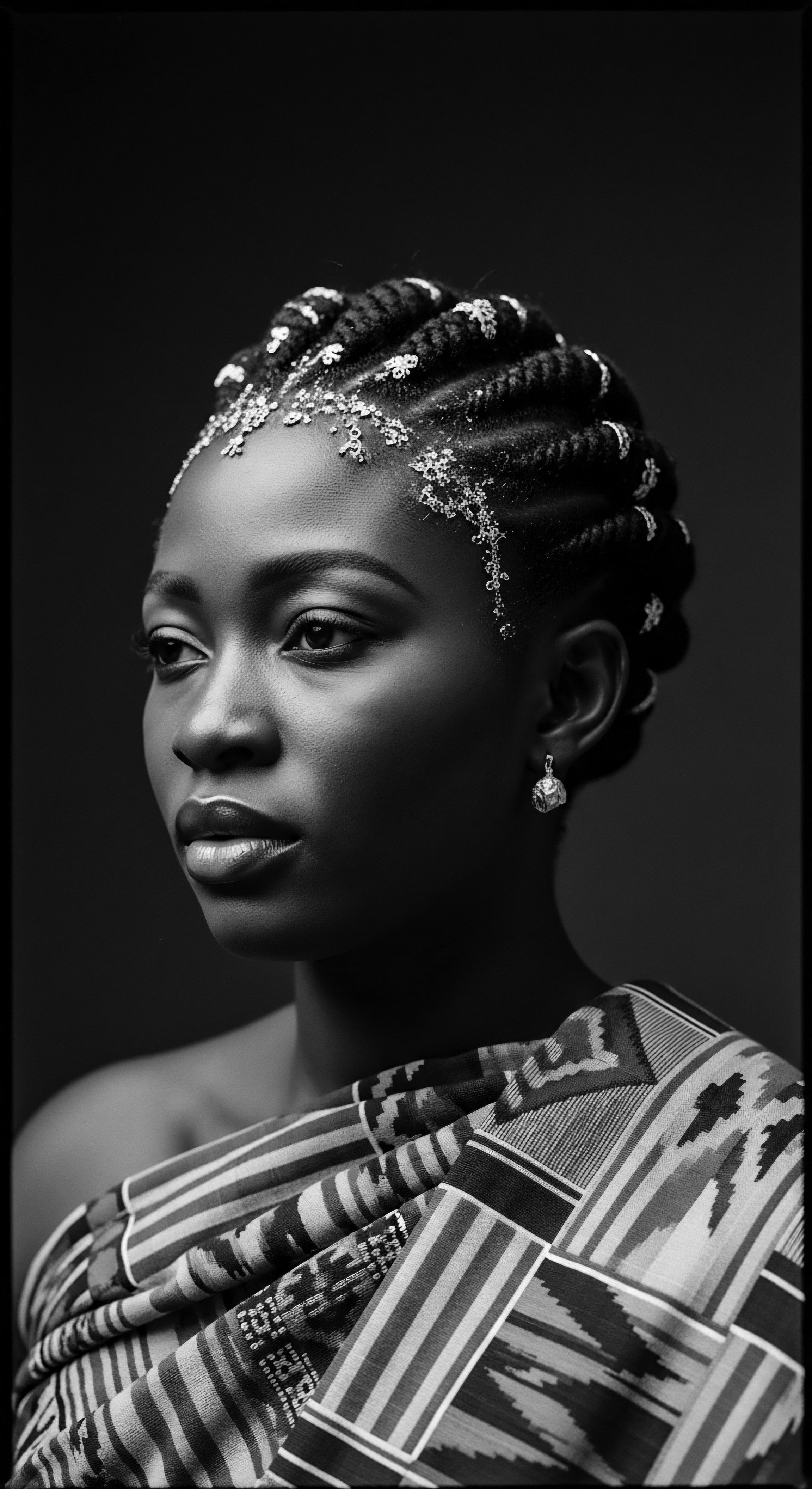
Hair Biology and Environmental Adaptation
Textured hair, with its distinct curl patterns ranging from waves to tight coils, possesses specific structural attributes that render it more susceptible to dryness and breakage compared to straighter hair types. The helical shape of each strand means that natural oils produced by the scalp struggle to travel down the entire length of the hair, leading to drier ends. Furthermore, the numerous bends and twists along the hair shaft create points of vulnerability, making it prone to tangling and mechanical damage from daily manipulation.
Ancient Protective Styles directly address these biological realities. By gathering the hair into compact, enclosed configurations, these styles reduce the surface area exposed to the elements, minimizing moisture loss due to evaporation. They also significantly decrease the need for daily combing and styling, thereby lessening friction and tension on the delicate hair strands. This thoughtful approach to hair management reflects an intuitive understanding of hair physiology, long before scientific terminology could articulate it.
- Moisture Retention ❉ Braids and twists seal in moisture, protecting hair from arid climates and harsh winds.
- Reduced Manipulation ❉ Styles like cornrows or Bantu knots minimize daily handling, preventing mechanical stress and breakage.
- Scalp Health ❉ Many traditional styles allowed for targeted application of nourishing oils and herbs directly to the scalp, promoting a healthy growth environment.
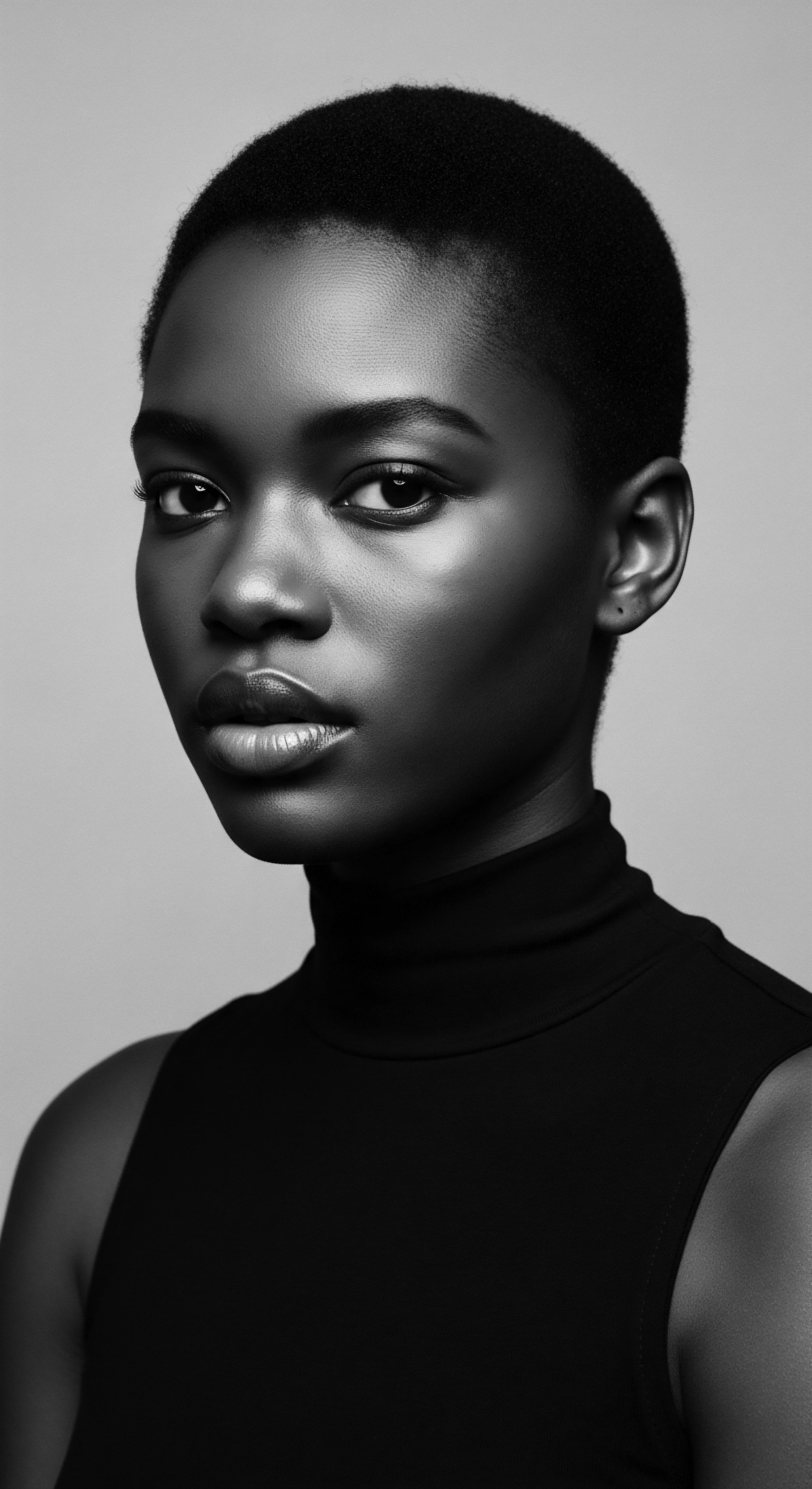
The Communicative Power of Coiffure
Beyond their practical benefits, Ancient Protective Styles functioned as a complex visual language within ancient African societies. The delineation of a person’s identity was often intricately linked to their hairstyle. These coiffures served as powerful non-verbal communicators, relaying information about an individual’s social standing, age, marital status, tribal affiliation, religious beliefs, and even their wealth. The sheer artistry and time investment required for many of these styles further underscored their significance.
For instance, in the Yoruba Culture of Nigeria, intricate patterns were not merely aesthetic; they carried spiritual significance, often crafted by revered braiders who held a respected place within the community. The specific patterns and adornments could denote a woman’s marital status or her transition to adulthood during initiation ceremonies. Similarly, among the Himba People of Namibia, elaborate styles coated with red ochre paste symbolized connection to the earth and ancestral spirits, with distinct styles marking different life stages. This demonstrates how deeply intertwined hair practices were with the social fabric and spiritual beliefs of these communities.
| Aspect Primary Purpose |
| Ancient Practice Survival, identity, spiritual connection, physical protection. |
| Contemporary Parallel (Heritage Focus) Hair health, cultural affirmation, identity expression, style versatility. |
| Aspect Ingredients/Tools |
| Ancient Practice Natural oils (e.g. shea butter, olive oil), herbs, clay, bone/wood combs. |
| Contemporary Parallel (Heritage Focus) Botanical oils, plant-derived products, wide-tooth combs, satin bonnets. |
| Aspect Social Context |
| Ancient Practice Communal rituals, intergenerational knowledge transfer, social signaling. |
| Contemporary Parallel (Heritage Focus) Salon as community space, online tutorials, personal expression. |
| Aspect Maintenance Ethos |
| Ancient Practice Long-term wear, minimal daily manipulation, scalp care. |
| Contemporary Parallel (Heritage Focus) Focus on moisture, low-tension installation, regular cleansing. |
| Aspect The continuous thread connecting these eras is the inherent understanding of textured hair's unique needs and the desire to honor its resilience. |
Ancient Protective Styles offer a compelling narrative of hair as both a biological marvel and a profound cultural artifact, a testament to human adaptation and identity.
The significance of these styles was so profound that during periods of forced displacement, such as the transatlantic slave trade, enslaved Africans carried these traditions with them, adapting them as acts of cultural preservation and resistance. Cornrows, for example, became a means of survival, with some enslaved individuals braiding rice seeds into their hair to ensure sustenance, or even creating intricate patterns that served as maps for escape routes. This historical account underscores the vital import of these styles beyond mere aesthetics; they were tools for survival, communication, and maintaining a sense of self amidst immense oppression.
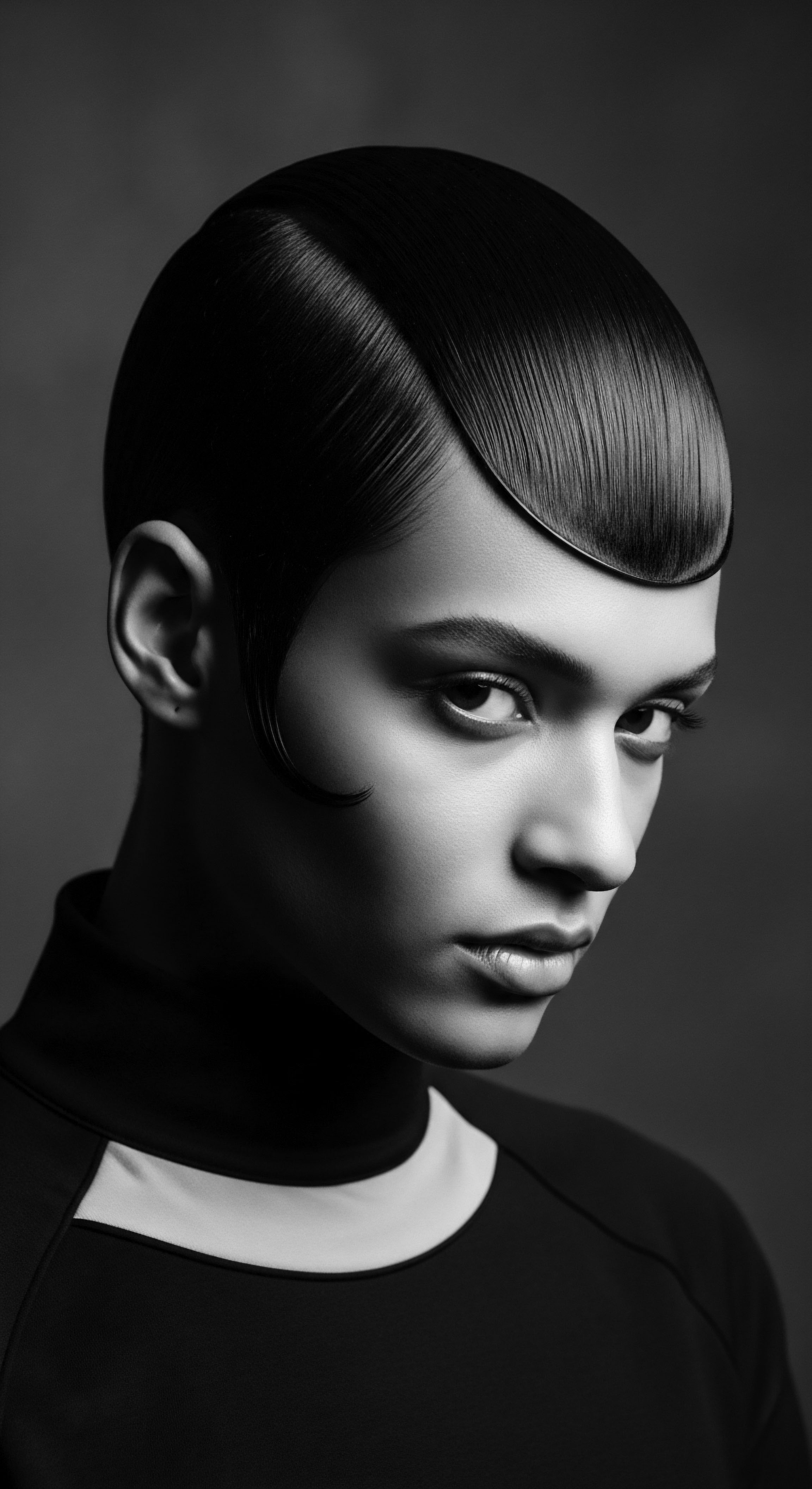
Academic
The academic definition of Ancient Protective Styles, within the rigorous context of Roothea’s ‘living library,’ transcends a mere cataloging of historical hair arrangements. It represents a critical examination of complex socio-cultural phenomena, biological adaptations, and ancestral knowledge systems that converge upon the singular yet expansive practice of safeguarding textured hair. This interpretation positions Ancient Protective Styles as a foundational element in the ontology of Black and mixed-race hair , a statement of being and belonging that has persisted through millennia. The meaning is derived from an interdisciplinary lens, drawing upon ethnobotany, anthropology, historical sociology, and trichology to delineate its multifaceted substance.
Ancient Protective Styles, in an academic sense, refer to a collection of hair management techniques, predominantly but not exclusively associated with textured hair types, characterized by their systematic design to minimize external stressors and mechanical manipulation while simultaneously serving as potent carriers of cultural, social, and spiritual information within pre-colonial and diasporic communities. This explication acknowledges these styles as both a practical application of empirical knowledge regarding hair health and a sophisticated form of non-verbal communication and identity construction. The core designation points to practices developed and refined over generations, reflecting a deep understanding of hair’s elemental biology and its profound role in human collective identity.

Echoes from the Source ❉ Biological and Ethnobotanical Underpinnings
The elemental biology of highly coiled or curly hair, marked by its elliptical cross-section and uneven cuticle layers, renders it inherently more prone to dryness and breakage. This structural predisposition, while a natural variation of human hair, historically necessitated adaptive care strategies. Ancient Protective Styles, therefore, did not merely emerge as aesthetic preferences; they arose as a direct response to the inherent vulnerabilities of textured hair in diverse environmental contexts. The careful bundling, twisting, or braiding of hair strands into compact configurations serves to shield the delicate cuticle from abrasive forces, reduce moisture evaporation, and minimize daily detangling, thereby preserving length and strength.
Furthermore, the ancestral practices surrounding these styles were often steeped in a rich ethnobotanical understanding. Communities utilized indigenous plant-based ingredients for cleansing, conditioning, and scalp treatment. For example, the use of Shea Butter (Vitellaria paradoxa), widely prevalent across West Africa, was not simply a cosmetic application. Its emollient properties provided a protective barrier, sealing moisture into the hair shaft, while its anti-inflammatory compounds supported scalp health, a crucial component for hair retention.
Similarly, various clays and herbal infusions served as gentle cleansers and conditioners, respecting the hair’s natural moisture balance. The designation of these styles as ‘protective’ is thus rooted in an empirically derived, though not formally scientific, knowledge of hair physiology and the properties of natural resources.

The Tender Thread ❉ Societal and Spiritual Resonance
Beyond their biological utility, Ancient Protective Styles functioned as a profound medium for social inscription and spiritual connection. The act of hair styling was frequently a communal ritual, a shared experience that reinforced familial bonds and intergenerational transmission of knowledge. This was not a solitary activity but a moment of shared narratives, wisdom, and collective memory.
The statement that hair served as a ‘carrier of messages’ in early fifteenth-century West African societies, including the Wolof, Mende, Mandingo, and Yoruba Peoples, is well-substantiated in anthropological literature (Byrd & Tharps, 2001). These intricate coiffures communicated a wealth of information ❉ age, marital status, ethnic identity, religious affiliation, wealth, and social rank.
The practice of Ancient Protective Styles was a communal act, a powerful conduit for intergenerational storytelling and the reinforcement of social cohesion.
Consider the profound example of hair’s role during the transatlantic slave trade. Enslaved African women, forcibly removed from their homelands and stripped of their material possessions and cultural markers, ingeniously utilized their hair as a covert means of resistance and survival. A particularly compelling historical account highlights how some enslaved African women, particularly rice farmers from West Africa, would meticulously braid rice seeds into their cornrows before boarding slave ships. This seemingly simple act of hair styling transformed into a powerful act of defiance and a desperate measure for survival, allowing them to smuggle vital sustenance and a piece of their agricultural heritage to the Americas.
Upon reaching their destinations, these concealed seeds became the foundation for new rice crops, providing both food and a tangible link to their ancestral lands and practices. This specific historical instance, while perhaps less universally known than the general concept of hair as resistance, powerfully illuminates the deep, life-sustaining connection between Ancient Protective Styles and textured hair heritage. The cornrow patterns themselves were sometimes employed as secret maps, guiding individuals along escape routes on plantations. This remarkable historical application provides a concrete illustration of how the very meaning of ‘protective’ extended beyond physical safeguarding to encompass the protection of life, culture, and the hope of freedom.
The spiritual dimension also formed a significant aspect of these practices. In many African cosmologies, hair, being the highest point of the body, was regarded as the closest to the divine, a conduit for spiritual energy and communication with ancestors. The care and styling of hair, therefore, became a sacred ritual, a means of honoring one’s spiritual self and maintaining cosmic balance. The interpretation of specific styles could vary widely across regions and ethnic groups, yet the underlying reverence for hair as a sacred entity remained a consistent thread.
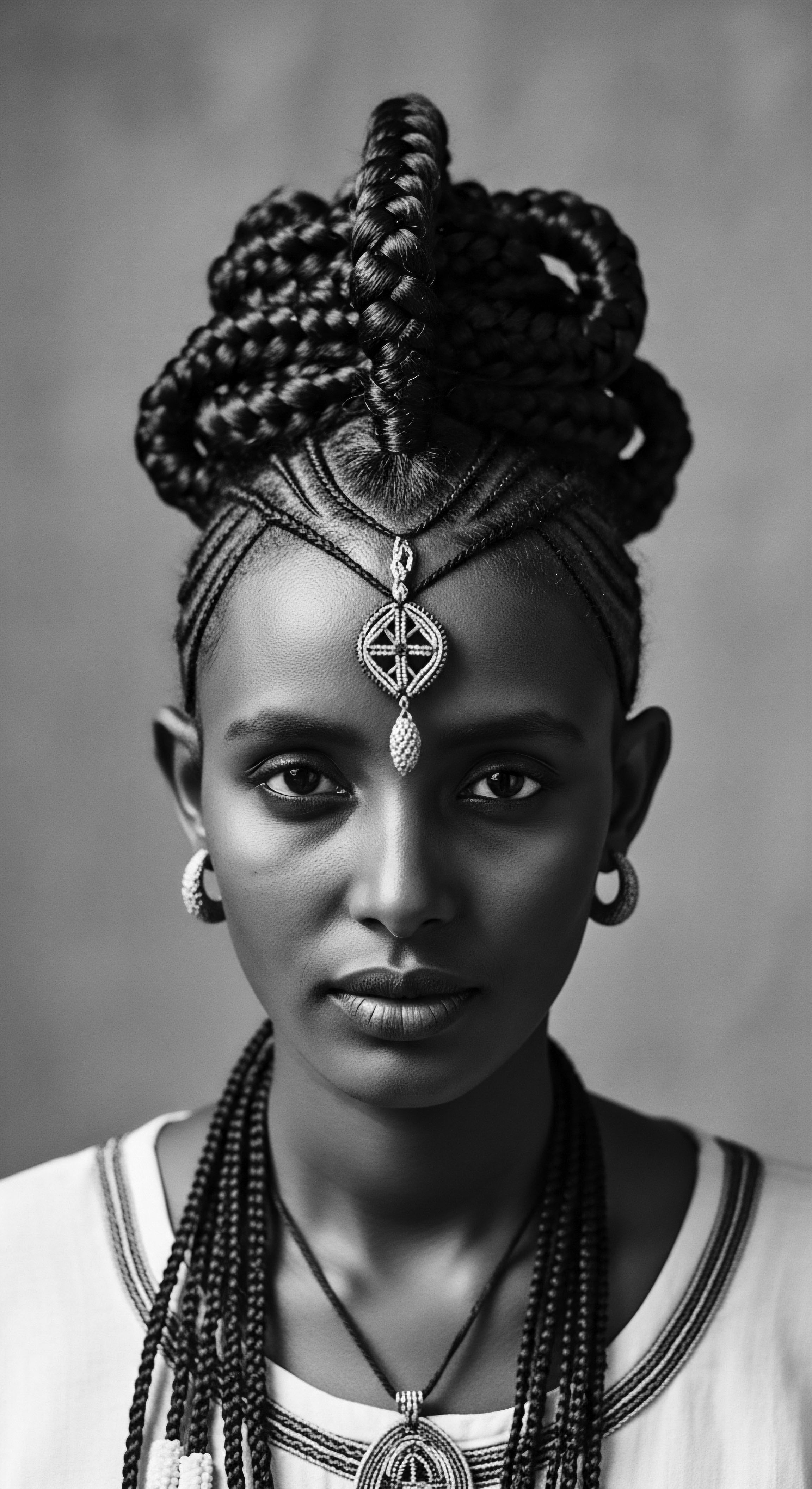
Interconnected Incidences ❉ Hair as a Site of Power and Resistance
The academic lens further compels an analysis of how Ancient Protective Styles became a contested site of power, particularly during periods of colonial subjugation and enslavement. The deliberate shaving of African hair by enslavers was a calculated act of dehumanization, an attempt to strip individuals of their identity and cultural markers. This act aimed to sever the profound connections between hair, heritage, and self. However, the resilience of these practices meant that even under extreme duress, the tradition of protective styling persisted, often in adapted or clandestine forms, serving as a silent assertion of dignity and cultural continuity.
The historical context of hair discrimination, which continues into contemporary times, highlights the enduring legacy of these power dynamics. Legislation such as the Tignon Law of 1786 in Louisiana, which mandated that Black women cover their hair with a knotted headdress, was an attempt to control and diminish their social standing and perceived attractiveness. Yet, even this oppressive measure was met with resistance, as women adorned their headwraps with such artistry that they continued to make a powerful visual statement. The persistent struggle for the acceptance and celebration of natural textured hair in modern society, often manifesting in debates over professional standards and beauty norms, directly echoes these historical battles over hair as a symbol of identity and autonomy.
- Cultural Reclamation ❉ The modern natural hair movement directly draws from and reclaims Ancient Protective Styles as symbols of Black pride and heritage.
- Economic Empowerment ❉ Traditional hair braiding salons continue to serve as vital community hubs and economic lifelines, particularly for immigrant women.
- Wellness Paradigm ❉ Contemporary understanding validates the holistic health benefits of these styles, connecting ancestral wisdom with modern trichology.
The study of Ancient Protective Styles, therefore, offers a robust framework for understanding the profound historical and ongoing relationship between textured hair, cultural identity, and societal power structures. It underscores the concept of hair as a living archive, capable of transmitting narratives of resilience, innovation, and enduring heritage across generations. This comprehensive exploration reveals how these styles are not merely aesthetic choices, but deeply rooted cultural expressions with tangible impacts on human experience and well-being.
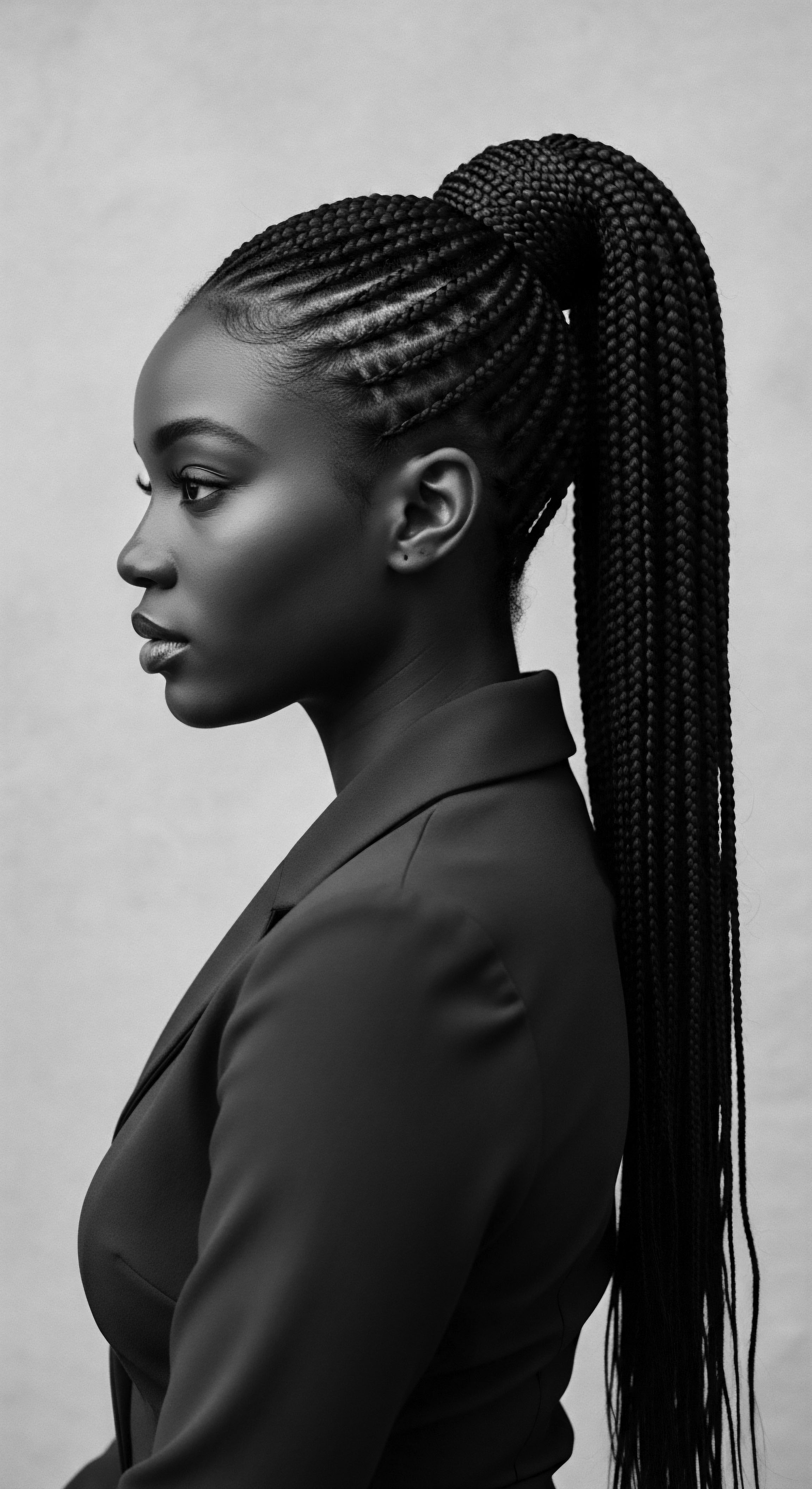
Reflection on the Heritage of Ancient Protective Styles
As we contemplate the expansive definition of Ancient Protective Styles, a resonant truth emerges ❉ these are more than mere techniques for hair management. They are living archives, each strand a testament to the enduring spirit of textured hair heritage. The journey from elemental biology to profound cultural expression reveals a continuous, unbroken lineage of care, creativity, and resistance. Roothea’s ‘Soul of a Strand’ ethos finds its deepest resonance in these practices, recognizing hair not as an isolated physical attribute, but as a vital conduit to ancestral wisdom and collective identity.
The ingenuity embedded in Ancient Protective Styles speaks volumes about human adaptability and the profound connection between people and their natural world. From the careful selection of plant-based ingredients for scalp nourishment to the intricate geometric patterns that conveyed social standing, every aspect of these traditions reflects a harmonious relationship with hair as a sacred extension of self. The legacy of these styles reminds us that true wellness for textured hair is inherently holistic, encompassing not only physical health but also spiritual alignment and cultural affirmation.
The enduring legacy of Ancient Protective Styles is a vibrant narrative of resilience, a profound affirmation of textured hair’s innate beauty and cultural depth.
The echoes from the source, those ancient practices that prioritized the well-being of hair, continue to guide contemporary approaches to textured hair care. The tender thread of community, woven through shared styling rituals and the transmission of knowledge from elder to youth, remains a powerful force in hair salons and family gatherings today. Finally, the unbound helix of textured hair itself, ever-present and continually asserting its unique beauty, stands as a symbol of liberation and self-acceptance, its journey shaped by the wisdom of the past and the aspirations for the future. The celebration of Ancient Protective Styles is, ultimately, a celebration of heritage itself—a recognition that the beauty and strength of textured hair are inseparable from its rich, complex, and powerful history.
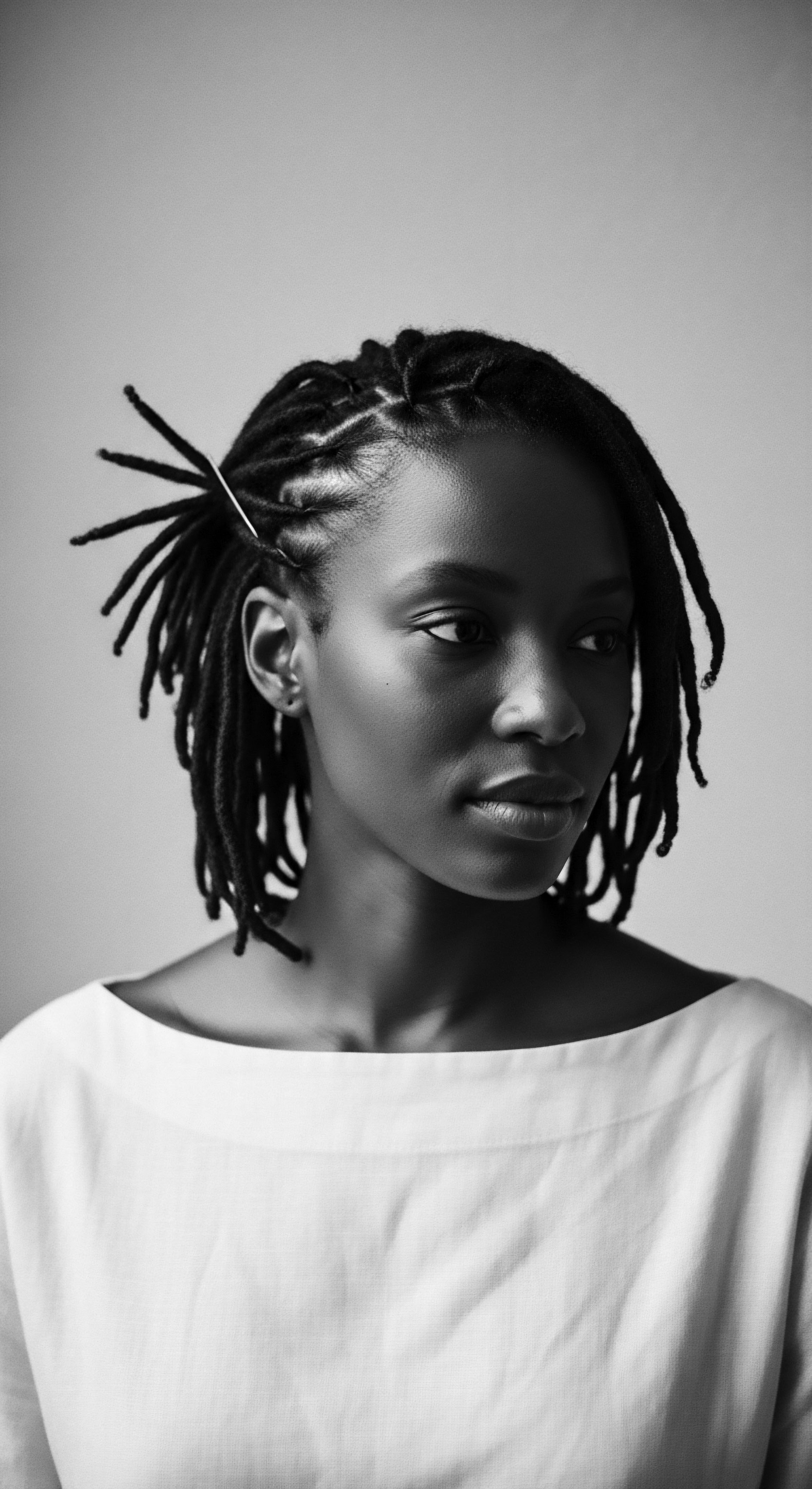
References
- Byrd, A. & Tharps, L. L. (2001). Hair Story ❉ Untangling the Roots of Black Hair in America. St. Martin’s Press.
- Griebel, H. B. (1986). African-American Hair ❉ A Study of Its Evolution, Styles, and Cultural Significance. (Unpublished doctoral dissertation).
- Gillow, J. & Sentance, B. (1995). The Art of African Textiles. Thames & Hudson.
- Gordon, M. (Year, specific article not found, cited in Omotos, A. (2018). The Journal of Pan African Studies).
- Omotos, A. (2018). The History of African Hair. Journal of Pan African Studies, 1(25), 50. (Cited in The Gale Review, 2021)
- Sieber, R. & Walker, R. A. (1987). African Art in the Cycle of Life. Smithsonian Institution Press.
- Tarlo, E. (2016). Hair ❉ A Cultural History. University of Chicago Press.
- Thompson, R. F. (1983). Flash of the Spirit ❉ African and Afro-American Art and Philosophy. Vintage Books.
